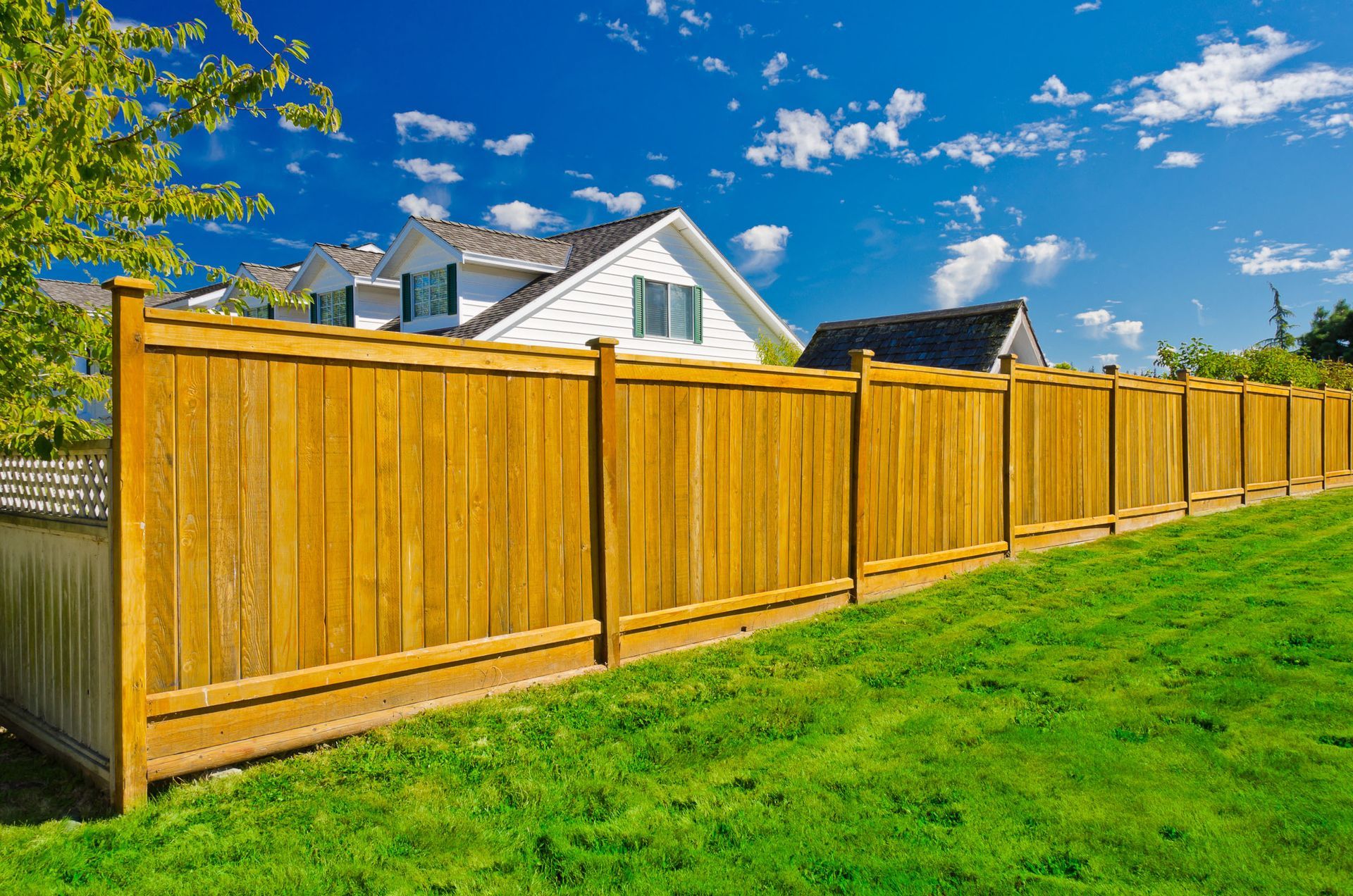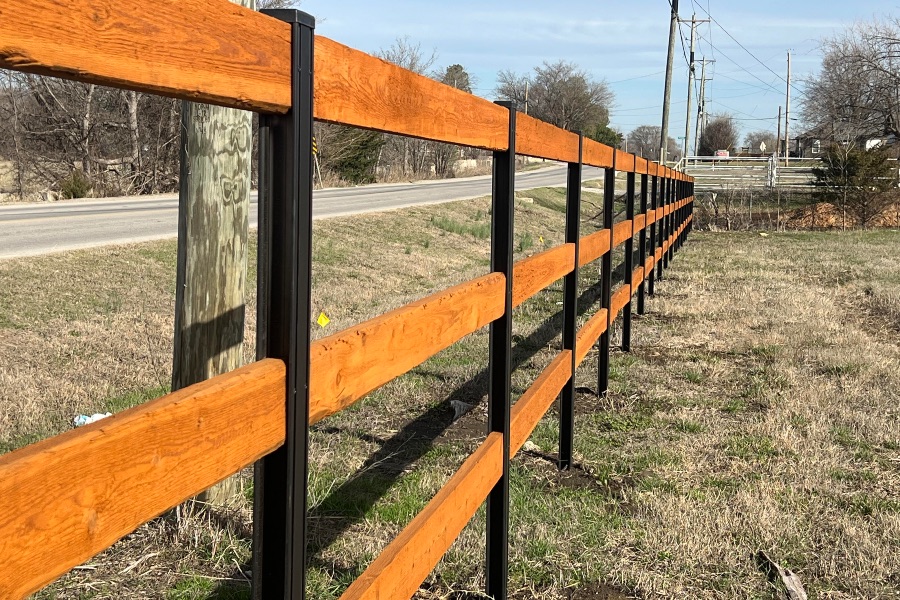All Categories
Featured
Preserving your fencing is essential to guarantee its capability, look, and longevity. Whether your fence is made of timber, vinyl, steel, or other products, recognizing its care needs will assist keep it in optimum condition.
![]()
Cleaning: Utilize a stress washer or soapy water with a soft brush to get rid of dirt, algae, and mildew. This ought to be done yearly or biannually. Discoloring and Securing: Apply a sealant or stain every 2-- 3 years to avoid moisture damages and UV fading. Select a high-grade product ideal for outside use. Repair services: Replace deformed, deteriorated, or cracked boards asap to stay clear of further damages. Bug Administration: Treat with a wood preservative to safeguard against termites and other pests. 2. Vinyl Fencings. Plastic fencings are prominent for their low-maintenance nature but still need some maintenance.
Cleansing: Clean the fence with a mix of water and light detergent using a soft sponge or cloth. Prevent unpleasant cleansers that may scrape the surface area. Inspections: Look for gaps or splits regularly, specifically after tornados. Vinyl can come to be fragile in exceptionally cold weather condition. Avoiding Discoloration: Get rid of discolorations without delay. For challenging spots, use a vinegar solution or a vinyl-safe cleaner. 3. Chain-Link Fences. Chain-link fencings are useful and durable, usually utilized for safety and security and limit marking.
Corrosion Elimination: Evaluate for corrosion routinely, especially in seaside or moist locations. Eliminate rust with a wire brush and apply a rust-proof covering. Cleaning: Wash with water to remove dirt and debris. Make use of a scrub brush for areas with hefty accumulation. Tightening and Services: Guarantee the blog posts and web links remain limited. Change damaged areas or equipment as required. 4. Wrought Iron Fencings. Wrought iron offers an elegant appearance but calls for constant focus to avoid rust and keep its surface.
Rust Prevention: Sand off any type of corrosion areas and use a rust-resistant guide and paint. This ought to be done annually or as required. Cleaning: Utilize a light soap option and a soft fabric or sponge to get rid of dirt. Stay clear of harsh chemicals that could damage the metal. Painting: Reapply paint every couple of years to secure the iron and boost its appearance. 5. Light weight aluminum Fences. Light weight aluminum fencings are light-weight, corrosion-resistant, and need very little care.
![]()
Cleansing: Use soapy water and a cloth to clean up the fence, rinsing thoroughly to prevent touches. Evaluations: Examine for loose screws or panels occasionally. Safeguard or replace components if required. Touch-Ups: Use paint designed for aluminum to cover any kind of chips or scrapes, shielding the steel beneath. 6. Composite Fences. Composite fence is constructed from recycled products, combining the appearance of timber with better durability.
Cleaning: Rinse with water and make use of a moderate detergent to get rid of dirt and stains. Avoid abrasive tools that might damage the composite surface. Examinations: Seek indicators of warping or fracturing, especially in locations with extreme temperature level modifications. Form Prevention: Clean mold or mildew promptly with a combination of water and white vinegar. 7. Bamboo Fences. Bamboo fence is environmentally friendly but much more fragile than various other products.
Cleansing: Utilize a soft brush with soapy water to tidy dust and particles. Prevent using excessive water pressure to avoid splitting. Securing: Use a water-resistant sealer every 2-- 3 years to secure versus climate damages. Repair work: Replace broken or broken bamboo poles as required to maintain the framework and look. General Upkeep Tips. Trim Plant Life: Maintain shrubs and creeping plants away from the fence to protect against moisture buildup and damages. Seasonal Care: In winter, clear snow accumulation from fences to prevent tension on the structure. In summer, check for sun damages or fading. Normal Examinations: Walk along the fencing line regularly to inspect for loose hardware, leaning areas, or other signs of wear. Final thought. Regardless of the kind of secure fencing product, normal upkeep is the vital to maintaining its feature and aesthetics. Wood fencings require the most upkeep, while vinyl and light weight aluminum need less initiative but still benefit from periodic cleaning and examinations. By addressing small problems early and carrying out regular care, you'll take pleasure in a fencing that remains appealing and tough for years ahead.

- Wooden Fences. Wood fencings are timeless but require routine treatment to protect against weather and bugs.
Cleaning: Utilize a stress washer or soapy water with a soft brush to get rid of dirt, algae, and mildew. This ought to be done yearly or biannually. Discoloring and Securing: Apply a sealant or stain every 2-- 3 years to avoid moisture damages and UV fading. Select a high-grade product ideal for outside use. Repair services: Replace deformed, deteriorated, or cracked boards asap to stay clear of further damages. Bug Administration: Treat with a wood preservative to safeguard against termites and other pests. 2. Vinyl Fencings. Plastic fencings are prominent for their low-maintenance nature but still need some maintenance.
Cleansing: Clean the fence with a mix of water and light detergent using a soft sponge or cloth. Prevent unpleasant cleansers that may scrape the surface area. Inspections: Look for gaps or splits regularly, specifically after tornados. Vinyl can come to be fragile in exceptionally cold weather condition. Avoiding Discoloration: Get rid of discolorations without delay. For challenging spots, use a vinegar solution or a vinyl-safe cleaner. 3. Chain-Link Fences. Chain-link fencings are useful and durable, usually utilized for safety and security and limit marking.
Corrosion Elimination: Evaluate for corrosion routinely, especially in seaside or moist locations. Eliminate rust with a wire brush and apply a rust-proof covering. Cleaning: Wash with water to remove dirt and debris. Make use of a scrub brush for areas with hefty accumulation. Tightening and Services: Guarantee the blog posts and web links remain limited. Change damaged areas or equipment as required. 4. Wrought Iron Fencings. Wrought iron offers an elegant appearance but calls for constant focus to avoid rust and keep its surface.
Rust Prevention: Sand off any type of corrosion areas and use a rust-resistant guide and paint. This ought to be done annually or as required. Cleaning: Utilize a light soap option and a soft fabric or sponge to get rid of dirt. Stay clear of harsh chemicals that could damage the metal. Painting: Reapply paint every couple of years to secure the iron and boost its appearance. 5. Light weight aluminum Fences. Light weight aluminum fencings are light-weight, corrosion-resistant, and need very little care.

Cleansing: Use soapy water and a cloth to clean up the fence, rinsing thoroughly to prevent touches. Evaluations: Examine for loose screws or panels occasionally. Safeguard or replace components if required. Touch-Ups: Use paint designed for aluminum to cover any kind of chips or scrapes, shielding the steel beneath. 6. Composite Fences. Composite fence is constructed from recycled products, combining the appearance of timber with better durability.
Cleaning: Rinse with water and make use of a moderate detergent to get rid of dirt and stains. Avoid abrasive tools that might damage the composite surface. Examinations: Seek indicators of warping or fracturing, especially in locations with extreme temperature level modifications. Form Prevention: Clean mold or mildew promptly with a combination of water and white vinegar. 7. Bamboo Fences. Bamboo fence is environmentally friendly but much more fragile than various other products.
Cleansing: Utilize a soft brush with soapy water to tidy dust and particles. Prevent using excessive water pressure to avoid splitting. Securing: Use a water-resistant sealer every 2-- 3 years to secure versus climate damages. Repair work: Replace broken or broken bamboo poles as required to maintain the framework and look. General Upkeep Tips. Trim Plant Life: Maintain shrubs and creeping plants away from the fence to protect against moisture buildup and damages. Seasonal Care: In winter, clear snow accumulation from fences to prevent tension on the structure. In summer, check for sun damages or fading. Normal Examinations: Walk along the fencing line regularly to inspect for loose hardware, leaning areas, or other signs of wear. Final thought. Regardless of the kind of secure fencing product, normal upkeep is the vital to maintaining its feature and aesthetics. Wood fencings require the most upkeep, while vinyl and light weight aluminum need less initiative but still benefit from periodic cleaning and examinations. By addressing small problems early and carrying out regular care, you'll take pleasure in a fencing that remains appealing and tough for years ahead.
Latest Posts
Why Regular Vehicle Maintenance at Montclare Auto Repair Keeps Your Wallet Happy
Published en
1 min read
Professional Residential Roof Covering Solutions You Can Depend On
Published en
1 min read
Picking the Right Roof Covering Color: Influence On Energy Effectiveness
Published en
1 min read
More
Latest Posts
Why Regular Vehicle Maintenance at Montclare Auto Repair Keeps Your Wallet Happy
Published May 27, 25
1 min read
Professional Residential Roof Covering Solutions You Can Depend On
Published May 26, 25
1 min read
Picking the Right Roof Covering Color: Influence On Energy Effectiveness
Published May 24, 25
1 min read